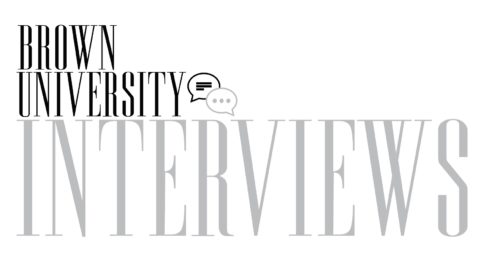
Kathryn Fantauzzi is an expert in early-stage tech commercialization dedicated to bridging the gap between good science and the customer. She is the co-founder and CEO of Apollo Neuroscience, a startup pioneering a new type of wearable that actively improves health, using touch therapy to promote stress resilience, sleep, focus, recovery, and more. Prior to launching her startup, Fantauzzi worked at the New York State Energy Research & Development Authority, where she helped in the growth and launch of a $20 million tech commercialization accelerator.
Dana Toneva: In an interview with Dr. William Seeds, you said that you have always loved, “Simplifying the seemingly complex and making it beautiful for other people to use.” Can you tell me a little bit about the role this interest of yours played in your educational and career path?
Kathryn Fantauzzi: When you’re a kid, there are certain things you gravitate to. I had a knack for bringing people together to get projects done, whether that was at school, in sports, or in clubs; I was often in a leadership position. When it came to picking a career path, I wanted my work to make a real difference. Given the challenges ahead of us at the time, I focused on public health and environmental affairs, like innovation in the climate space — where progress would benefit as many people as possible. When I got to graduate school, I focused on public economics and finance, specifically behavioral economics. I have always been fascinated with the way that people make decisions and how the economy works and motivates us. I started my first job in governance at the Energy Research and Development Authority in New York, where I developed a $20 million incubator fund for early stage technology in the clean energy sector.
Here’s the thing; there are a lot of really great ideas in the world. Often, the person who creates something — a researcher, an engineer, a brilliant physician — comes up with a really great idea, but they don’t necessarily know how to bring that idea to life. In health care, for example, the average time it takes to get something from an idea and research to the public is seventeen years. That’s a very, very long time.
Our job [at the Energy Research and Development Authority in New York] was to identify companies and technologies that were through the basic R&D but hadn’t scaled up yet [to identify which ones we could help accelerate]. That’s where I learned to work with universities and labs, to identify promising technology, and to work with researchers to scale their ideas. It was amazing training for what I would go on to do with Apollo Neuroscience.
When it comes to taking technology out of the lab, what is the most important element or stage of the process?
The number one priority is ensuring that what you have built works for the group that you intend it to work for. It is crucial that you do a lot of user testing in the very beginning. Often, when something is built in a lab, researchers are very afraid to talk to their potential customers, patients or users. It’s normal to be a little nervous, but that’s the most important part. Even though you might believe that you understand the problem, you will not know exactly what to build until you have actually talked to people and learned what their problems, needs, and expectations are. We did a ton of testing with the Apollo Neuro technology both before and after we got the lab results. After our initial clinical trials at the University, we tested about 3,000 people over eighteen months to confirm results in the real world before we decided to start a company and build the product. We wanted to make sure that this device worked both in the lab and in the real world. If you are trying to start something new, constant user testing is the key aspect before you even build it, while you’re building it, and after you’ve built it.
The second most important thing is a team with diverse skill sets. Diversity of background is super important, because you need to know how to build products from a product, engineering, and customer point of view. You also need someone who understands the business element, and who can design something beautiful and easy to use. This kind of team is one of the reasons we were able to bring our product to the market so quickly.
No one would guess that Apollo — a device that looks like a simple wrist watch — actually has a hidden mechanism that sends soothing vibrations to your nervous system. What is your approach when it comes to communicating the science behind this type of “wellness technology” to your clients? How do you assure them that they are in good hands?
When we were developing the product, we wanted to make it safe and easy to use by a lot of people. The reason for that is, when you are stressed out, it is even harder to do the “healthy things” that benefit you. It is harder for you physiologically when your body has gone into a fight state. [When your body is in fight mode], doing wellness checks like meditation and breathwork, or even regular activities like maintaining an exercise routine or good sleep hygiene are actually harder.
In terms of communicating the science to patients, we had six trials, both in-lab and in the real world. We spent a lot of time thinking about presenting our scientific findings in a relatable way. If you want to communicate findings clearly to the people you’re trying to reach, you have to break down the complex neuroscience behind it. Einstein said that if you cannot explain it to a twelve-year-old, then you don’t understand it yourself. In the end, the science behind it is simply how your body responds to the environment. We made sure that we explained this idea in a very simple way, because this would help people understand the device and incorporate it into their lives.
Tell me a bit about the design and science behind the Apollo?
There were a lot of different modalities for the type of product we wanted to build. David Rabin, my co-founder and husband, is a psychiatrist and neuroscientist, and he really wanted something that people would be able to use throughout their day: while their kids are yelling in the back of the car, when they have to take an exam, when they give a presentation, or when they can’t sleep. Most alternatives require you to leave your day-to-day life, which can be really hard.
Dave mapped out the touch receptor system in the body to understand how a different sensory input could change how we recover. The environment matters a lot; lighting, music and touch affect how you feel. Touch turns out to be the only thing that someone can bring with them all the time because you need your eyes and your ears for the rest of your environment. That’s why we picked this pathway for creating a universally safe method to stimulate the body. In addition, we needed the product to be wearable so that people could take it anywhere with them.
You launched your company in January of 2020. In what ways did the COVID-19 pandemic influence your business?
This turned out to be one of the most important times that the company could have launched. We launched as a direct to-consumer product. The silver lining of the pandemic for our company is that we were able to scale a team with diverse skill sets from across the country. There are hubs around the country which are specialized in certain things: Los Angeles has an amazing design scene, San Francisco and the Bay Area have amazing software development and technologists, Pittsburgh, PA is a hub for med tech, and the list goes on. The pandemic allowed us to recruit from different areas and operate in an all-remote environment. We have people that we would not know if we had been limited to our locality.
How did you come up with the name for the product and the company?
A friend of mine suggested “Apollo” while we were brainstorming names. I thought to myself, “that one kind of sticks.” I liked it, and I didn’t know why. The next morning I looked up its symbolism. Apollo had a few key elements in Greek mythology. As the god of sound and music, he gifted man with the lyre (a kind of harp) for sound healing. He had also gifted the caduceus to Hermes, which is a symbol of modern medicine, representing the balance in the body between the sympathetic and the parasympathetic nervous system, the yin and the yang.
[There’s also the other element of Apollo and the moon mission.] The rest is history.
Do you personally own an Apollo? What do you do in your personal life to help you de-stress?
I have an Apollo and I use it every day. I am really busy and have to bounce between different areas of focus throughout the day. It helps me do those transitions very well and maintain my energy by supporting my nervous system. I also use it for sleep. Our recent sleep study showed that people who use Apollo consistently get a 19% average improvement in their deep sleep and a 14% average improvement in their REM sleep. Getting quality sleep is critical for preventing burnout. Otherwise, I turn my phone off at nine o’clock and don’t look at it anymore. I try to keep my weekends clear of technology. The rest of the recipe is staying connected to family and friends, spending time outdoors, and making sure that I eat well. The car doesn’t run without any gas, and we can’t go a distance if we don’t take care of ourselves.
What piece of advice would you give to aspiring entrepreneurs?
Meet other entrepreneurs. Starting something new is hard and having a network of people who have done it before and understand the process will help you avoid a lot of problems. They will also give you a community that understands what you’re going through and can support you. Listening to other leaders and other founders, whether their business is anything like yours or not, can teach you a lot. The other part is staying connected to your community. Keeping in touch with your friends, who can ground you, is particularly important. If you work really, really hard, you can get isolated in work and you eventually burn out. Stay in touch with your community along the way.
* This interview has been edited for length and clarity.




